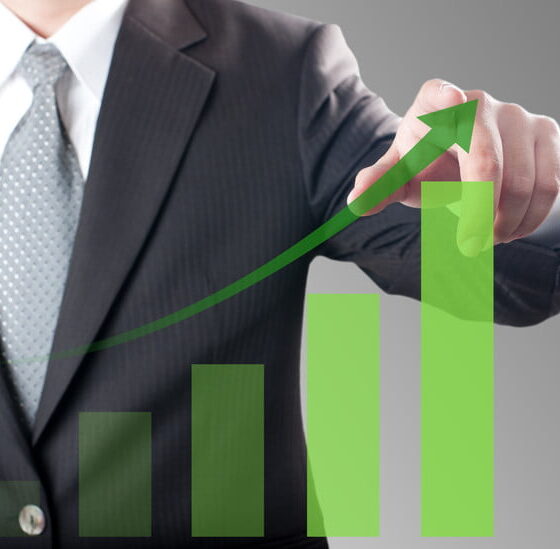

Environment
4 Powerful Strategies for Growing a Greener Business
Smart businesses go green because it makes sense.
Yes, it cuts waste, preserves natural resources, decreases our dependency on fossil fuels, can improve the health of our workers and the community and many other incredibly important things. But most of all it saves money and gives you the perfect opportunity to tell the world what you’re doing to save the planet.
Even though we all know it makes sense to be more energy efficient, many people still don’t realize the scale of the savings involved. But they are huge. According to the Power Forward 3.0 report, in 2016, 190 of US Fortune 500 companies, including IBM, Praxair and Microsoft, together saved almost $3.7bn through renewable energy and energy efficiency initiatives.
If that wasn’t enough to tempt you to commit to going green, here’s another report: Better Business, Better World. It found that companies could potentially unlock a staggering $12 trillion in savings through implementing sustainable models by 2030. And this is only the savings, of course. As a result of going green, you’re also more like to make more money – as customers flock to you from your competitors, impressed by your green credentials.
1. Bring Your Personal Green Habits to Work With You
Today we’re all used to looking for ways to save energy and cut waste in our own homes. We use LED and energy-efficient light-bulbs; we pack our lofts with tons of insulation; we use smart meters to control our heating via apps on our phone, and take the time to recycle. But when it comes to our business we’re not always quite so committed.
In fact, a 2016 survey by the Telegraph and YouGov found that half of senior managers do not know what proportion of their expenditure goes to energy costs.
So, before you start crafting a plan to improve the environmental credentials of your business, know where you’re starting from. Measure your current energy usage; evaluate the current sustainability of your products and packaging; and make an assessment of your current environmental costs.
You may want to bring in an expert to help you with this auditing process, but if you put your head to it, you should be able to at least be able to get your hands on some figures you can start to work with. Without these initial figures, you won’t know later down that line how much of an impact your changes have had. And you won’t have the data to tell your customers how great they are!
2. Upgrade Your Structures with Energy Conservation in Mind
When you build a new office or work premises today, it must adhere to strict BREEAM standards for energy efficiency. But not everyone owns or leases premises built in the last few years. Your premises might be decades or even centuries old. This is a good place to start for businesses thinking about their energy usage.
You’re probably losing a surprising amount of energy through the structural elements at your facilities. In fact, according to TheGreenAge, about 35% of the heat will escape through the walls and through gaps in and around windows and doors. And about 10% of heat will disappear through the floor. Maybe it’s time to put down some thick carpet, or re-insulate your frames?
It’s usually best to call in the experts to undertake an energy audit and tell you where you’re losing heat and wasting light. An energy analyst will be able to help you find areas where you can use technology to help cut costs associated with energy and material waste. In fact, there is even new technology that will create a thermal image of your premises to pinpoint exactly where energy is being lost.
There are many independent organisations, consultants and energy suppliers to help you assess what you need to do to cut long-term costs. With their help, you may even qualify for grants designed to help you retrofit your business.
3. Unleash Clean, Green Energy in Your Production Centers
As any sensible person who cares about the environment will know, limiting your energy usage is only half the problem – you also need to know what the source of the energy is, and how it is being produced. Thankfully, there are many energy firms capable of providing companies with responsibly sourced, clean energy.
And there’s also the new option of producing your own energy. This isn’t nearly as difficult as you may first imagine.
Many companies of all sizes have started to see the benefits of powering their whole business using renewal energy – either produced by themselves or brought in. Twelve percent of small businesses now generate electricity onsite, according to a report by the FSB. Even global mega-corporations like Wal-Mart, General Motors, Bank of America, Google, Apple and Facebook have committed to powering 100% of their operations with renewable energy.
Some inspirational corporate leaders have been investing in renewables and natural energy for years. Lars Petersson, CEO and President of Ikea has been instrumental in driving the company not only to use solar arrays, but also build biogas-powered fuel cell systems at stores in the US. And retail-chain owner Philip Day, the entrepreneur behind Edinburgh Woollen Mill, operates one of the largest Anaerobic Digesters in the UK.
4. Upgrade your Vehicles, Packaging and Supply Chain to Comply with Your Greener Vision for the Future
But being green isn’t only about improving your facilities. You need to think about every part of your business. The three that should top your list are transportation, packaging and supply chain logistics.
First, whether your business runs 10 cars, 100 vans or a huge fleet of lorries, the next logical step is to bite the bullet, ditch your diesels and swap over to hybrid or fully electric vehicles. While this might seem like a huge cost, you need to think long term. By upgrading your vehicles you’re protecting yourself from future fuel price rises and make sure you’re ready for an electric-vehicle future.
Second, your company may still utilize cheap, non-biodegradable packaging. This is causing havoc for our oceans. According to Reuse This Bag, enough plastic is thrown away each year to circle the earth four times. Companies should ditch this now. It may be expensive in the short-term, but you will win more customers in the long-term. Plus, taxes are starting to increase on plastic products, only expediting the ROI on upgrading existing packaging materials.
And last, but not least, you need to take a close look at your supply chain. You can have the most environmentally friendly company in the world. But, if your suppliers are dirty and you continue to provide them with business, you might be causing more harm than good in the long run.


 Environment10 months ago
Environment10 months agoAre Polymer Banknotes: an Eco-Friendly Trend or a Groundswell?

 Environment12 months ago
Environment12 months agoEco-Friendly Home Improvements: Top 7 Upgrades for 2025

 Features9 months ago
Features9 months agoEco-Friendly Cryptocurrencies: Sustainable Investment Choices

 Features10 months ago
Features10 months agoEco-Friendly Crypto Traders Must Find the Right Exchange





























